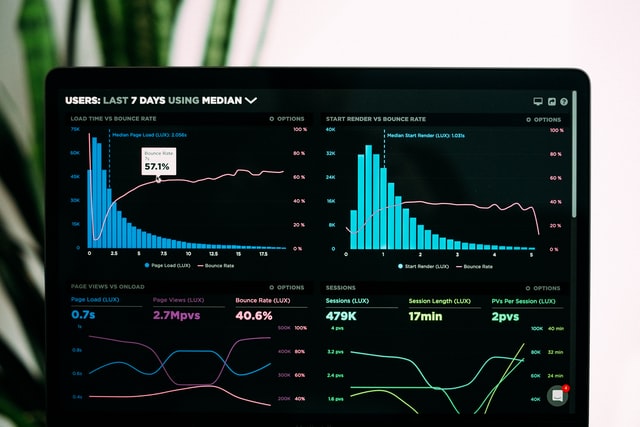A content gap analysis is a powerful tool for maximizing your company’s search engine optimization (SEO) strategy. Essentially, it’s a process for marketers to identify gaps between popular searches, topics, and content already available on the internet. So, if a lot of people are searching “how to update to iOS 15” and there aren’t many pages with that info, this is where a content gap exists. The analysis lets you locate that gap so you can create content for it. Keep reading for more info on the benefits and how to perform one for your company.
Benefits
Performing a content gap analysis yields a few key benefits. First, it generates much more attention to your site. By filling a content gap, you can attract those Google searchers with little to no competition, essentially funneling all of them to your site. This can also help you reach new audiences if you have a flexible mindset and create a content strategy for gaps you hadn’t previously made. You may not specialize in Apple or software, but you can still create an article on how to update to iOS15 to attract a new audience of visitors to your site.
Key Components
There are six key components to a successful content gap analysis:
- Understanding the Competitive Landscape
- Auditing Content
- Intent-based Keyword Research
- Identifying Gaps
- Implementing New Strategies
- Measuring Analytics and Metrics
Understanding the Competitive Landscape
Understanding the competitive landscape is all about seeing the types of content and marketing that already exist in your industry. It’s essentially a process of elimination starting point so you know where not to create new content. As for how you scout for other content, there are a few ways for you to do this.

Scan Competitor’s Sites
Odds are, you already know who your competitors in the industry are. The easiest way to start your content gap analysis, then, is to look directly at the content that your competitors are already outputting. Look through their current product listings, social media content, and blog posts. You don’t need to go too in-depth. You only need the headlines to know the general topics competitors are covering. You do want to evaluate a broad number of posts available, though. Get a picture of as much competitor content from as many other companies as you can to get the best results for this step.
View Top Queries
The next method for understanding the competitive landscape of your content gap analysis is to look at the top searches on Google and related sites in your industry. Sites like Ahrefs, SEMrush, and Moz have tools you can use for this. Utility and cost can vary between offerings, so you’ll want to do your research to pick the best one. Generally, they’ll let you see what the top queries are within a certain industry and the pages that result. Typically, the most searched queries will already have plenty of content written for them. Now that you know what they are, you can start ideating content for different areas.
Auditing Content
The next part of your content gap analysis is auditing your content. An audit is a way for you to look through all the content currently on your website. It includes all SEO standards, like keywords and backlinks. They may not seem important, but pay close attention to your backlinks. They are one of the top three Google ranking factors and garner a significant amount of organic traffic. The purpose of the audit is for you to know if there are topics you’ve already addressed in the past. You don’t want to go to the trouble of writing an article for updating iOS software when you’ve already done it in the past.
Google Tools
Google provides useful free tools for the audit of your content gap analysis:
Google Console
The first of these is Google Search Console. Google Search Console helps you map your site content to see how your content ranks for different searches. It’s a way for you to easily track the direct results you’re getting from your SEO efforts. If you already have a page on a topic but it ranks low, it won’t hurt to spruce it up.
Google Analytics

The second tool is Google Analytics. This will help you see metrics for the navigation within your site. That way you can see how easy it is to get from content to related pages, such as transitioning from a guide to a relevant product. A content gap analysis won’t be effective if your new content doesn’t actually bring people into the store.
Another feature of Google Analytics is user metrics. This is useful for UX and tracking user behaviors so you can test whether your linking is actually effective. Just because you have links doesn’t guarantee people will click on them.
Spreadsheet Tracking
When auditing your content, the process can be overwhelming. A spreadsheet, either in Excel or Google Sheets, will make your life much easier. They allow you to index all your data and content to easily find issues and solutions with what you have. It may seem tedious to make but will be much more efficient for your content gap analysis in the long run. It’s especially efficient if you know how to utilize extra spreadsheet tools like scripts. You can catalog all your keywords, links, topics, popularity, and much more. The more data you use, the more resources you’ll have for managing content in the long run.
Intent-based Keyword Research
Intent-based keyword research is all about taking a deeper look at your keywords and how Google recognizes them.
Keywords
If you’re unfamiliar, keywords are a vital tool for Search Engine Optimization. Keywords are often what users search for in Google. When Google crawls site pages to rank them for display, it will check how many times those keywords are present in the content. It’s a tricky balancing act to pull off for your content gap analysis. Not enough keywords and Google will deem your site irrelevant to the search. Too many and Google will flag your site as trying to cheat the system. Make sure your content has the right balance of keywords to get ranked the highest in Google’s system.
Updates to the System
Google is making updates to their algorithm, however, that is changing how pages are considered relevant to their searches. Google now has a better understanding of a page’s usefulness by the intent of a search. User intent is the driving factor behind the search. If a person searches for how to update their phone, they intend to look for information or a guide. A page needs to address that desire for the information to be considered relevant. If a page talks about iOS 15 without explaining how to update the software, it won’t be considered relevant. If you want an impactful content gap analysis, you need to address intent.
How to Address Intent

In order to address intent, you simply have to recognize why it is people are searching for those keywords and respond to them. A guide for giving people info is a good example. It isn’t always obvious though. People searching for “phone accessories” could want to buy phone accessories, gift phone accessories, or learn about phone accessories. If you want to address this keyword and stay relevant, you want to address all of these possible intents. The more intents you can recognize and properly address within your site content, the more successful your content gap analysis will be.
Identifying Gaps
Now that you’ve looked at what topics not to cover and have a better grasp of keywords and intent, you can pinpoint the gaps you want to address. You can do this through competitive analysis and search engine result pages.
Competitive Analysis
Competitive analysis is comparing your notes on competitors’ content with ideas for new content. By using competitor content as a starting point, you can compare with your keyword research to see if there are any categories not addressed. While you pinpoint your gaps, make sure to keep the intent of the keywords in mind to inform your process. It may take a little creativity, but this is where the content gap analysis starts to fully take shape.
Search Engine Result Pages
Once you have ideas on where you think you’d like to place your content, search for the applicable keywords in Google. You can evaluate the amount and quality of pages that come up. Doing this allows you to catch any errors you had earlier in the process and any niche providers you weren’t formerly aware of. Remember that the search results don’t have to be empty for content to have value. As long as you can make your content better than what’s available, your content gap analysis will be successful.
Implementing New Strategies

Now comes the fun part: creating new content to fill gaps. With your gaps properly identified, you can now tailor content specifically to fill them and gain more traffic. There are a couple of different ways to approach this.
Articles
Articles or blog posts are the simplest way to fill gaps in content because there aren’t any limits. You can use them to advertise your product, tell stories about your company, offer information or guides, and more. By using your content gap analysis as a reference, you can directly address customers’ intent in any written form you’d like.
Product Pages
If you think you have products that could appeal to certain keywords or intents, you can rework their product pages to show up for those searches. Integrate the keywords with intent into the text and Google should start seeing the page as relevant for the content gap.
Measuring Analytics and Metrics
Your job isn’t entirely finished once your new content is published. In order to check that your content gap analysis was successful, you need to look at performance metrics. You can view these directly by using the Google tools from the Auditing Content section and seeing if your metrics have improved since you started. If they have, you’ll have concrete proof. If not, then you can identify how short of your goals you are and formulate a new plan to improve. The reality of content generation is that it never really stops. You have to be active with your content consistently over time.
Catching Other Factors

It’s not always your content itself that causes poor results from a content gap analysis. Multiple factors influence a customer’s enjoyment and willingness to use a site. A very common one companies fall short of is loading times, especially on phones. You should seek to have a page load under 3 seconds to be faster than about 50% of the web. Another factor is the display and responsiveness of a site. A site that’s frustrating to use is not going to bring in more customers. If you can’t figure out why your content gap analysis isn’t working, check these areas.
Fixing Problem Factors
You can fix these other problem factors by making adjustments to your site so that it loads faster and is easier for customers to use. Depending on the state of your site, that could mean an entire overhaul. For that, you’re going to want to do your research on UX and web design principles to build your site properly. Don’t skimp on this area. Around 70% of online shoppers say that convenience is more important than the brand they buy from.
Keep Improving
As we said, content gap analysis isn’t something you do once and get it done. It’s something that you should be doing consistently for better market saturation and awareness. The more you look for potential new areas and make more content, the more users you’ll attract over time. This is where keeping a good spreadsheet of your data comes in handy. You can make your next analysis much more efficient with a large amount of data already on hand.
For more SEO information and companies, explore the rest of Best SEO’s site.

